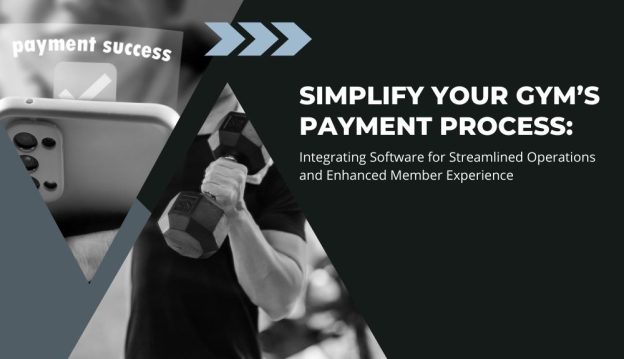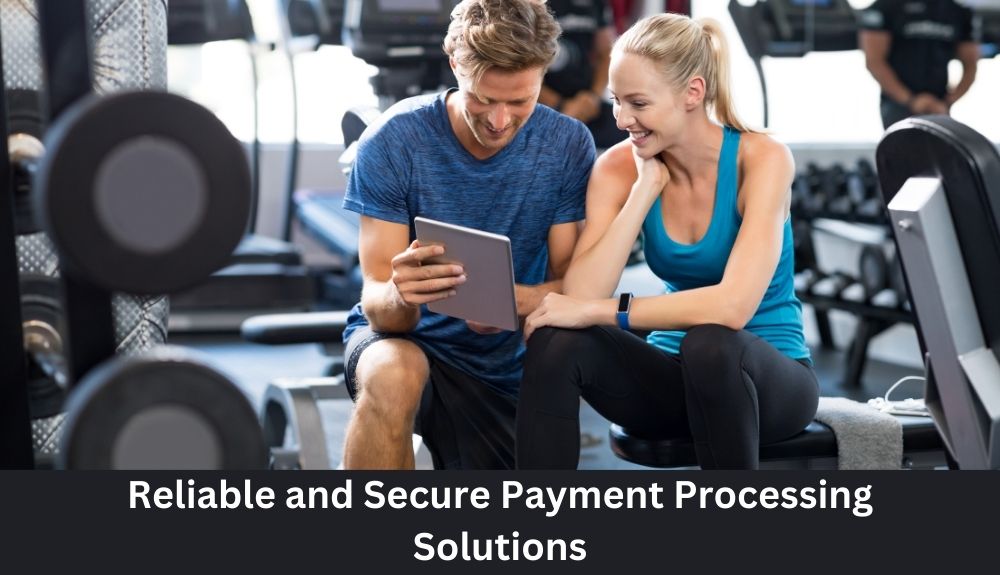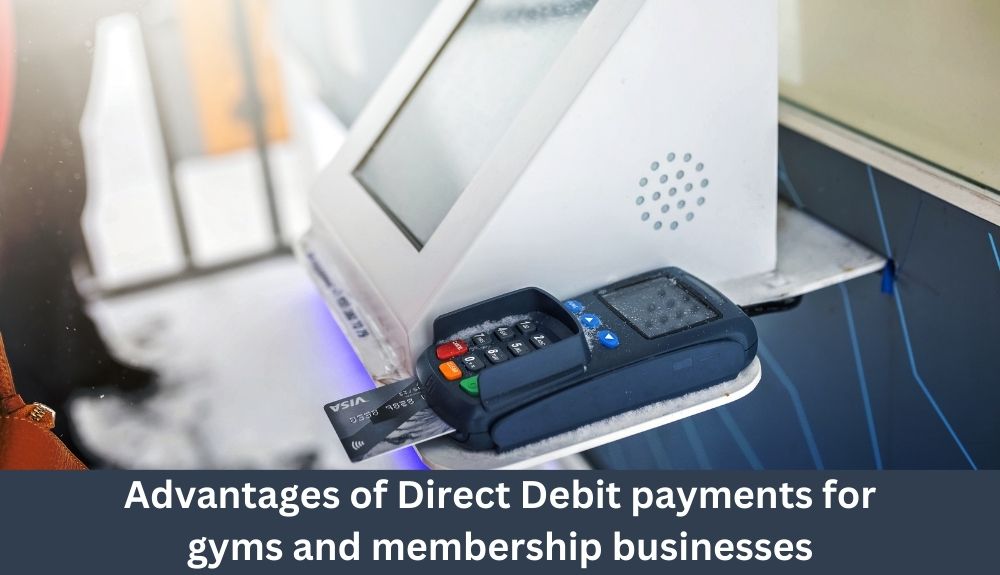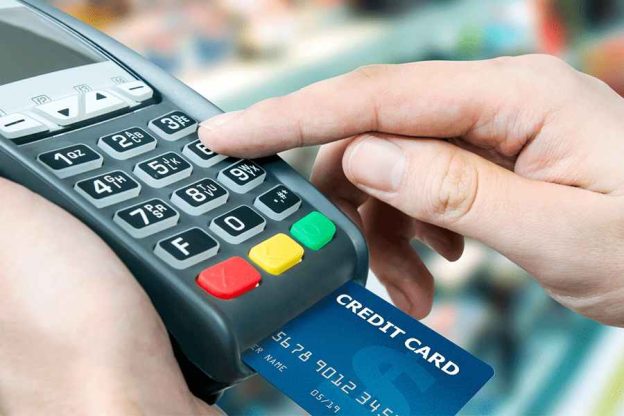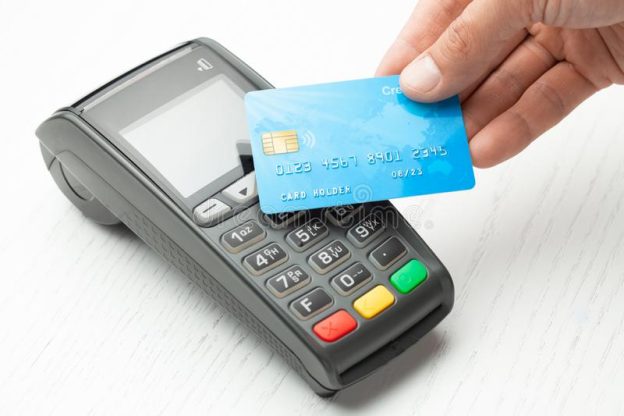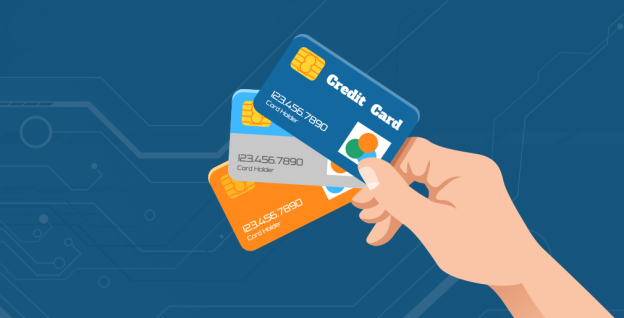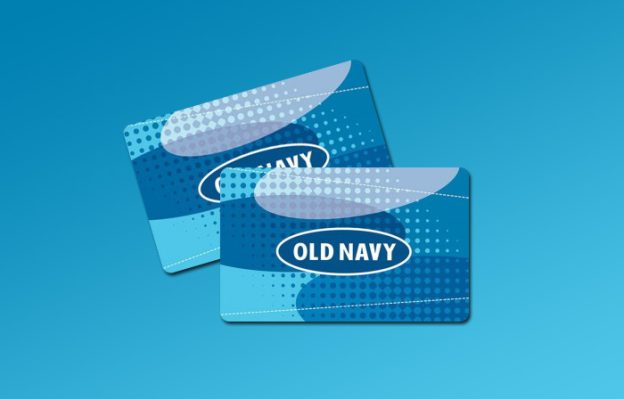Are you tired of struggling to find the ideal payment processor that seamlessly fits your fitness business needs? Picture this: a streamlined payment process, efficient membership management, and satisfied clients. The right payment processor can make this a reality for your business.
In the fitness industry, selecting the best payment processor is paramount to ensure smooth transactions and effective business operations. With a plethora of options available, making an informed decision is key to maximizing customer satisfaction and financial efficiency.
Our comprehensive comparison guide delves into various payment processing solutions tailored for fitness businesses. From credit card transactions to gym membership management, we evaluate features, user-friendly interfaces, security measures, customer support, and more. Discover the perfect fit for your fitness business to elevate your operations and boost client satisfaction.
Introduction to Payment Processing Solutions for Fitness Businesses
In the world of fitness businesses, having the right payment processing solution is crucial for ensuring seamless transactions and effective membership management. As gym owners and fitness center operators, you understand the value of providing a convenient and hassle-free payment experience to your clients. This is where payment processors play a vital role.
Payment processing solutions enable you to securely process credit card and debit card payments, whether it’s for gym memberships, fitness classes, personal training sessions, or any other services you offer. They not only simplify your financial operations but also enhance the overall customer experience.
When it comes to choosing a payment processor for your fitness business, it’s important to evaluate and compare your options. Consider the unique needs of your gym or fitness center and find a payment processing system that aligns with your requirements. By doing this, you can streamline your administrative tasks, improve communication channels, and offer convenient payment options to your clients.
During your evaluation, pay close attention to the features and capabilities of different payment processors. Look for user-friendly interfaces, robust security measures, and industry-standard compliance with data protection and privacy regulations. Additionally, consider features such as recurring billing, mobile app support, detailed reporting and analytics, and integration with your existing gym management software.
By making an informed decision and selecting the right payment processor, you can ensure efficient payment processing, satisfied customers, and streamlined business operations. In the following sections, we will dive deeper into evaluating gym billing software, understanding security and compliance, comparing payment processing options, and exploring additional services offered by payment processors. Let’s get started on finding the perfect payment processor for your fitness business.
Key Points:
– Payment processing solutions are crucial for seamless transactions and efficient membership management in fitness businesses.
– Gym owners and fitness center operators should evaluate and compare their options to find the right payment processor.
– Consider features like user-friendly interfaces, robust security measures, and integration capabilities with existing software.
– The goal is to streamline administrative tasks, improve communication channels, and offer convenient payment options.
Evaluating Gym Billing Software: Features and Functionalities
When it comes to running a fitness business, having efficient gym billing software is essential for seamless financial operations and membership management. To help you make an informed decision, we will compare and evaluate different gym billing software options, focusing on their key features and functionalities.
1. Recurring billing: One important aspect to consider is the ability of the software to handle recurring billing. This feature allows you to automatically charge your members on a regular basis, ensuring timely payments and minimizing administrative tasks.
2. Payment gateways: Look for software that integrates with popular payment gateways, such as PayPal or Stripe. This enables you to offer your customers multiple payment options, including credit cards, debit cards, and online payment platforms.
3. Member management: Effective member management is crucial for a fitness business. Choose software that provides detailed information about your members, including their contact details, membership status, and attendance history. This will help you better understand your customer base and tailor your services accordingly.
4. Invoicing and reporting: A robust gym billing software should offer invoicing capabilities, allowing you to easily generate and send invoices to your members. Additionally, the software should provide comprehensive reporting features that give you insights into your financial performance, membership trends, and more.
5. Integration with fitness management solutions: If you already use fitness management software for tasks like scheduling classes or managing personal trainers, ensure that your gym billing software integrates seamlessly with these systems. This integration streamlines your operations and reduces manual data entry.
6. User-friendly interface: The software should have a user-friendly interface that makes it easy for you and your staff to navigate and perform essential tasks. Look for intuitive design and efficient workflows, ensuring a smooth user experience.
Remember, the best gym billing software for your fitness business will depend on your specific needs and requirements. Take the time to evaluate each option, considering factors such as pricing, customer support, and additional features offered. By choosing the right gym billing software, you can streamline your financial operations and enhance the overall experience for both your business and your members.
Choosing a Reliable Payment Processor: Factors to Consider
When it comes to choosing a payment processor for your fitness business, it’s important to consider several key factors that will ensure smooth transactions and efficient membership management. Here are the factors you should take into account:
Integration Capabilities
It’s crucial to choose a payment processor that seamlessly integrates with your existing gym management software or other fitness applications. This ensures that your financial operations are streamlined and eliminates the need for manual data entry or reconciliation. Look for a payment processor that offers easy integration options and compatibility with popular fitness software vendors.
Security Features
Protecting your customers’ payment information should be of utmost importance. Choose a payment processor that provides robust security measures, such as encryption and tokenization, to safeguard sensitive data. Look for processors that comply with industry standards and regulations, such as PCI-DSS (Payment Card Industry Data Security Standard), to ensure the highest level of security for your transactions.
Cost
Consider the cost of using a payment processor for your fitness business. Look for transparent pricing structures, including transaction fees, monthly fees, and any additional costs for specific features or services. Keep in mind that the cheapest option may not always be the best, as you’ll want to balance cost with the features and functionality you require.
Customer Support
Reliable customer support is essential when dealing with payment processing issues or inquiries. Choose a payment processor that offers responsive customer support through various channels, such as phone, email, or live chat. Look for providers that have positive reviews regarding their customer service and prompt problem resolution.
Additional Services
Some payment processors offer additional services that can benefit your fitness business. These may include features like membership management systems, reporting tools, or integration with class scheduling software. Evaluate your specific needs and consider whether these additional services align with your business requirements. While not essential, they can enhance your operational efficiency and improve the overall customer experience.
By considering these key factors, you can make an informed decision when choosing a reliable payment processor for your fitness business. Integration capabilities, security features, cost, customer support, and additional services should all be carefully evaluated to ensure seamless transactions and efficient membership management. Remember, finding the right payment processor is an investment in the success of your fitness business.
Assessing Payment Processing Needs: Understanding Security and Compliance
When it comes to choosing a payment processing solution for your fitness business, assessing your specific needs and understanding security features and compliance requirements is crucial. By evaluating these factors, you can ensure that you select a payment processor that not only meets your fitness business’s unique requirements but also prioritizes the security and compliance aspects necessary for seamless transactions. Here are some key considerations to keep in mind:
1. Payment Security Measures
Protecting your customers’ payment information should be a top priority. Look for a payment processor that offers robust security measures, such as encryption technology and tokenization, to safeguard sensitive data. It’s important to choose a payment processor that complies with industry security standards like Payment Card Industry Data Security Standard (PCI DSS) certification.
2. Compliance with Regulatory Requirements
Ensure that your chosen payment processor adheres to relevant regulatory requirements. This includes compliance with data protection and privacy regulations, as well as any specific regulations within the fitness industry. By selecting a payment processor with a strong emphasis on compliance, you can mitigate the risks associated with non-compliance and protect your business from potential legal consequences.
3. Integration Capabilities
Consider the compatibility of the payment processor with your existing fitness software and applications. Seamless integration between your payment processor and other systems, such as gym management software or membership management tools, can streamline your operations and enhance the overall efficiency of your business. Look for payment processors that offer easy integration options and provide a user-friendly interface for smooth navigation.
4. Customer Support
Reliable customer support is essential in case you encounter any issues or need assistance with your payment processing system. Choose a payment processor that offers responsive customer support channels, including live chat, email, or phone, to ensure prompt assistance and problem resolution. Good customer support ensures minimal disruptions to your financial operations and high levels of customer satisfaction.
By thoroughly assessing your payment processing needs and considering these factors, you can make an informed decision when selecting a payment processor for your fitness business. Remember, security, compliance, integration capabilities, and customer support are all critical aspects that contribute to the smooth and efficient operation of your fitness business. Don’t compromise on these features and choose a payment processor that meets all your requirements.
Comparing Payment Processing Options: Key Features to Look For

When it comes to payment processing for fitness businesses, it’s essential to choose a solution that offers the right features to meet your specific needs. To help you make an informed decision, let’s compare different payment processing options and explore their key features. By considering these factors, you can ensure seamless transactions and efficient management of your fitness business.
Payment Gateways
– Look for payment processors that offer a wide range of payment gateways to cater to different preferences.
– Ensure that the payment gateways are reliable, secure, and compatible with your website or online platform.
– Consider the ease of integration and user-friendly interfaces provided by the payment processor’s supported payment gateways.
Recurring Billing
– If your fitness business offers membership or subscription-based services, prioritize payment processors that support recurring billing.
– Check if the payment processor offers flexible billing options, such as weekly, monthly, or annual subscriptions.
– Look for features like automated membership renewals and the ability to easily manage cancellations or changes to recurring payments.
Mobile Payments
– With the increasing use of mobile devices, it’s crucial to choose a payment processor that supports mobile payments.
– Look for solutions that offer mobile apps or responsive payment interfaces to ensure a seamless and convenient experience for your customers.
– Consider whether the payment processor supports popular mobile payment methods such as Apple Pay or Google Pay.
Reporting and Analytics
– Opt for payment processing options that provide comprehensive reporting and analytics features.
– Look for features that allow you to track sales, revenue, and other important metrics to gain insights into the financial performance of your fitness business.
– Consider whether the payment processor offers detailed transaction reports and the ability to export data for further analysis.
Integration with Accounting Software
– Consider whether the payment processor integrates smoothly with your existing accounting software.
– Look for features that enable automatic syncing of transaction data, saving you time and effort in manual data entry.
– Check if the payment processor supports popular accounting software platforms such as QuickBooks or Xero.
By comparing different payment processing options based on these key features, you can choose a solution that aligns with the needs of your fitness business. Remember to prioritize seamless integration, security measures, and user-friendly interfaces to enhance the overall payment experience for both you and your customers.
Pros and Cons of Third-Party Payment Processors for Fitness Businesses
When it comes to payment processing for fitness businesses, one option to consider is using a third-party payment processor. These processors act as intermediaries between your business and the financial institutions that handle the actual transaction. Here are some pros and cons of using third-party payment processors for fitness businesses:
Pros
1. Simplified Setup and Integration: Third-party payment processors often offer simple integration with your existing systems, making it easier to get up and running quickly. They typically provide APIs and plugins that can be easily integrated into your website or gym management software.
2. Enhanced Security Measures: Reputable third-party payment processors prioritize security and invest heavily in advanced safeguards to protect both your business and your customers’ payment information. They often have robust encryption protocols in place to ensure secure transactions.
3. Reduced Liability: When you use a third-party payment processor, they assume a significant portion of the liability for payment processing and related issues. This can provide your fitness business with additional protection and peace of mind.
4. Expanded Payment Options: Third-party payment processors usually support a wide range of payment methods, including credit cards, debit cards, mobile payments, and even alternative payment options like digital wallets. Offering multiple payment options can improve customer satisfaction and help you attract a broader customer base.
Cons
1. Transaction Fees: Third-party payment processors charge fees for their services, typically in the form of a percentage of each transaction or a flat fee per transaction. These fees can add up, especially if your fitness business processes a high volume of payments. It’s essential to carefully consider the cost in relation to your business’s revenue and profit margins.
2. Limited Control: When you rely on a third-party payment processor, you are entrusting them with a critical aspect of your business’s operations. This means that you have limited control over the payment process, including the ability to customize payment flows or address issues directly with your customers.
3. Risk of Account Holds or Freezes: Some fitness businesses have reported instances where third-party payment processors placed holds or froze their accounts due to suspicious activity or policy violations. While these measures are in place to protect against fraud, they can temporarily disrupt your business’s cash flow. It’s crucial to familiarize yourself with the processor’s policies and guidelines to minimize any potential risks.
4. Dependency on Third-Party Providers: By choosing a third-party payment processor, you become reliant on their services for payment processing. If the processor experiences technical difficulties or service disruptions, it can affect your business’s ability to collect payments. It’s essential to choose a reputable and reliable processor to mitigate this risk.
Overall, using a third-party payment processor for your fitness business can offer convenience, security, and expanded payment options. However, it’s crucial to weigh the associated costs and potential risks against the benefits to make an informed decision that aligns with your business’s specific needs and goals. Additionally, ensure you carefully read and understand the terms and conditions provided by the chosen processor to avoid any surprises or unforeseen challenges along the way.
Understanding the Costs: Pricing and Additional Services
When it comes to selecting a payment processor for your fitness business, understanding the costs involved is crucial. In addition to transaction fees, there may be additional charges and fees that can impact your bottom line. By carefully evaluating the pricing structures of different payment processing solutions, you can make an informed decision that aligns with your business goals.
Transaction Fees
Transaction fees are a primary consideration when determining the cost of a payment processing solution. These fees are typically a percentage of each transaction or a fixed amount per transaction. It’s essential to compare the transaction fees offered by different providers to ensure you’re getting the best value for your money. Consider factors such as the volume of transactions your business generates and any specific needs or requirements you may have.
Additional Services
Apart from transaction fees, it’s crucial to consider the availability of additional services that payment processors provide. Many processors offer membership management and reporting tools that can streamline your operations and improve efficiency. These tools may include features such as client management, class scheduling, staff management, and financial reporting. Assess the specific needs of your fitness business and determine which additional services align with your requirements. Integrating these services into your payment processing solution can help enhance your overall customer experience while optimizing your business operations.
Pricing Structures
Different payment processors may have varying pricing structures, such as flat-rate pricing or interchange plus pricing. Flat-rate pricing offers simplicity, as you pay a fixed fee per transaction regardless of the transaction type. On the other hand, interchange plus pricing provides more transparency, as it separates the interchange fees set by card networks and the processor’s markup. Assess the pros and cons of each pricing structure and consider the projected transaction volume and types for your fitness business to choose the most cost-effective option.
Negotiating Better Rates
Don’t be afraid to negotiate with payment processors to secure better rates for your fitness business. By leveraging your transaction volume and demonstrating your value as a long-term customer, you may be able to negotiate lower transaction fees or additional perks. Keep in mind that some processors may be more open to negotiations than others, so it’s essential to compare offers from multiple providers and choose the one that aligns with your financial goals.
In conclusion, understanding the costs associated with different payment processing solutions is crucial for making an informed decision for your fitness business. By evaluating transaction fees, considering additional services, exploring pricing structures, and negotiating rates, you can choose a payment processor that meets your unique needs while optimizing your financial operations.
Remember, cost should not be the sole determining factor. Take into account the quality of customer support, security measures, and the overall reputation of the payment processor to ensure a seamless and reliable payment processing experience for your fitness business.
Negotiating Better Rates with a Payment Processor
When it comes to running a fitness business, finding ways to optimize costs and increase profitability is crucial. One area where fitness businesses can save money is by negotiating better rates with their payment processor. By securing more favorable transaction fees, fitness businesses can improve their financial performance and allocate resources to other areas of the business. Here are some valuable tips for negotiating better rates with a payment processor:
1. Research Multiple Providers
Before entering into negotiations, it’s essential to research and compare different payment processors. Look for providers that specialize in serving the fitness industry and offer competitive rates. Consider their reputation, reliability, and additional services they provide, such as membership management systems or reporting tools.
2. Understand Your Business Needs
Before negotiating, have a clear understanding of your fitness business’s payment processing needs. Consider transaction volumes, average ticket sizes, and any specific requirements unique to your business. This knowledge will help you negotiate rates based on your actual usage.
3. Highlight Your Payment Volume and Growth Potential
Emphasize your fitness business’s payment volume and growth potential to the payment processor. Show them how your business is thriving and forecast future growth. Payment processors are more likely to offer competitive rates to businesses that demonstrate long-term potential.
4. Leverage Competitive Bids
Don’t be afraid to leverage competitive bids. If you have received rate quotes from multiple payment processors, use them to negotiate with your preferred provider. Let them know that you have other options and that you are willing to switch to a competitor if they cannot offer more favorable rates.
5. Seek Bundled Services
Explore whether the payment processor can offer additional services or packages at a discounted rate. For example, if they provide membership management systems or reporting tools, inquire about discounted rates when bundling these services with payment processing.
6. Long-Term Contract Negotiation
Consider negotiating a longer-term contract to secure better rates. Payment processors may be willing to offer lower transaction fees in exchange for a longer commitment. However, thoroughly review the terms and conditions of the contract to ensure it aligns with your business needs.
Remember, negotiating better rates requires a proactive approach and leveraging the unique aspects of your fitness business. By diligently researching, understanding your business needs, and effectively communicating your value, you can secure more favorable rates with your payment processor, ultimately saving money on transaction fees and enhancing your bottom line.
Importance of Integration: Ensuring Compatibility with Fitness Software
Seamless integration between a fitness business and its chosen payment processor is of utmost importance in ensuring smooth and efficient operations. The compatibility between the payment processor and existing fitness software and applications can greatly impact the day-to-day functioning of the business.
Streamlined Operations and Efficiency
Integration between the payment processor and fitness software enables streamlined operations, eliminating the need for manual data entry and reducing administrative tasks. It allows for real-time synchronization of payment data, membership details, and class scheduling, ensuring accurate records and minimizing errors. By automating these processes, fitness businesses can save valuable time and allocate resources more effectively.
Enhanced Customer Experience
A well-integrated payment processor and fitness software provide a seamless experience for customers. From online class registrations to managing memberships and processing payments, integration ensures a smooth and hassle-free journey for clients. This enhances customer satisfaction and loyalty, as they can easily manage their accounts, view transaction history, and make payments through a user-friendly interface.
Improved Financial Management and Reporting
Integration allows for comprehensive financial management by consolidating payment data and streamlining reporting processes. Fitness businesses can easily track revenue, analyze trends, and gain valuable insights into their financial performance. In-depth reporting and analytics help in making informed business decisions, optimizing pricing strategies, and identifying areas of improvement.
Scalability and Future Growth
Choosing a payment processor that seamlessly integrates with fitness software sets the foundation for scalability and future growth. As a business expands or introduces new services, an integrated system allows for easy addition of features and functionalities. This flexibility ensures that the payment processing solution can adapt to changing business needs and accommodate future expansion plans.
Exploring Additional Services: Membership Management and Reporting Tools
Payment processors offer more than just processing transactions. They also provide additional services that can greatly benefit fitness businesses. Two of these services are membership management systems and reporting tools. Let’s explore how these services can enhance the efficiency and effectiveness of your fitness business operations.
Membership Management Systems
A membership management system is a valuable tool for fitness businesses as it streamlines the process of managing memberships, tracking member activity, and handling renewals. With a robust membership management system integrated into your payment processor, you can:
1. Simplify Member Onboarding: Automate the sign-up process with online registration forms and waivers, allowing new members to easily join your fitness center or gym.
2. Efficiently Manage Member Data: Keep track of member details, such as contact information, membership status, and class schedules, all in one centralized system.
3. Automate Renewals and Payments: Set up automated reminders for membership renewals and enable members to conveniently make payments online, ensuring a seamless and hassle-free experience for both you and your members.
4. Class Scheduling and Booking: Simplify class scheduling, reservation management, and check-ins, allowing members to easily book and attend classes.
5. Accessible Member Portals: Provide members with access to personalized portals where they can view their account information, make payments, and manage their membership preferences.
A comprehensive membership management system offers a wide range of features that streamline administrative tasks and improve the overall member experience.
Reporting Tools
In addition to membership management, payment processors often provide reporting tools that offer valuable insights into your fitness business. These tools allow you to generate reports on various aspects of your business, including:
1. Financial Operations: Track revenue, transaction details, and payment trends to gain a better understanding of your cash flow and financial performance.
2. Membership Analytics: Analyze member data, such as new member acquisition, member retention rates, and membership demographics, to make data-driven decisions and tailor your marketing strategies.
3. Class Attendance and Utilization: Monitor class attendance and utilization rates to optimize class scheduling, ensure proper staffing, and maximize facility usage.
4. Revenue Forecasting: Use historical data and trends to forecast future revenue, helping you make informed business decisions and set realistic financial goals.
With these reporting tools, you can gain a deeper understanding of your fitness business’s performance, identify areas for improvement, and make strategic decisions to drive growth and success.
In conclusion, payment processors offer additional services such as membership management systems and reporting tools that can significantly improve the efficiency and effectiveness of your fitness business. By utilizing these services, you can streamline member management, automate administrative tasks, and gain valuable insights into your business operations. Choose a payment processor that provides these services to enhance your fitness business’s overall performance and customer satisfaction.
Setting Up and Configuring a Payment Processor for a Fitness Business
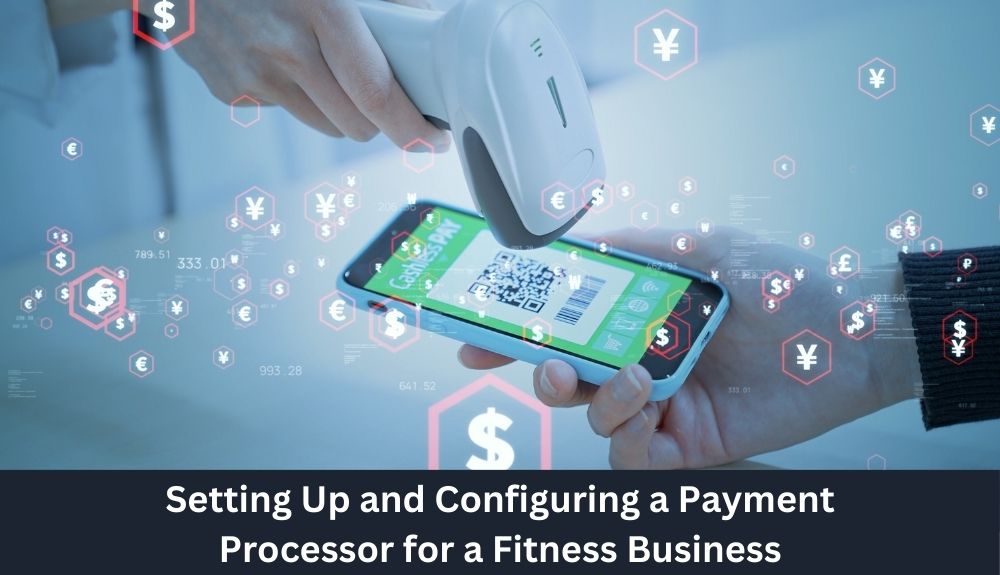
To ensure a seamless implementation process, setting up and configuring a payment processor for your fitness business requires careful attention. Follow these step-by-step guidelines to streamline the process and start accepting payments efficiently:
1. Evaluate your business needs: Before selecting a payment processor, assess your specific requirements. Consider factors such as the types of payments you’ll accept (credit cards, debit cards, etc.), the volume of transactions, and any unique needs of your fitness business.
2. Research and compare options: Thoroughly research different payment processors that cater to fitness businesses. Evaluate their features, pricing structures, integration capabilities, and customer reviews. Narrow down your choices based on your evaluation.
3. Sign up for an account: Once you’ve chosen a payment processor, visit their website and sign up for an account. Provide the necessary details about your fitness business, including your contact information and banking details.
4. Set up integrations: Check if your chosen payment processor integrates smoothly with your existing fitness software or gym management system. Seamless integration is vital for efficient payment processing and membership management. Follow the integration instructions provided by the payment processor or consult their support team if needed.
5. Configure payment settings: Within your payment processor account, configure the payment settings to align with your business needs. Set up parameters such as accepted currencies, recurring billing options, and any additional features you require.
6. Enable security measures: Pay special attention to security measures offered by your payment processor. Enable features such as fraud detection, SSL certificates, and tokenization to protect sensitive customer information during transactions.
7. Test transactions: Before going live, perform several test transactions to ensure the payment processor is functioning correctly. Test different payment methods and transaction scenarios to identify and address any issues beforehand.
8. Communicate with your customers: Once your payment processor is set up and functional, inform your customers about the available payment options. Update your website, class schedule, or any other communication channels to let customers know they can now conveniently make payments.
By following these steps, you can set up and configure a payment processor for your fitness business smoothly, ensuring efficient and secure payment processing. Remember to regularly review and optimize your payment processing system as your business grows and evolves.
Legal and Regulatory Compliance: Understanding Requirements
When it comes to using a payment processor for your fitness business, it’s crucial to understand and comply with the legal and regulatory requirements. This ensures that your business operates within the boundaries of data protection and privacy regulations, protecting both your customers and your reputation.
Data Protection and Privacy Regulations
Data protection laws are designed to safeguard the personal information of individuals. As a fitness business, you collect sensitive data such as names, addresses, and payment details from your customers. Therefore, it’s essential to comply with regulations such as the General Data Protection Regulation (GDPR) or the California Consumer Privacy Act (CCPA), depending on your location.
To ensure compliance, consider implementing the following measures:
1. Obtain Consent: Clearly communicate to your customers how their data will be collected, processed, and stored. Obtain their consent before doing so.
2. Secure Data Storage: Implement robust security measures to protect the customer data you collect. Encryption, firewalls, and regular data backups are important security measures to consider.
3. Data Processing Agreements: If you share customer data with your payment processor or any other third-party service providers, ensure that you have a legally binding data processing agreement in place.
4. Data Breach Notification: In the event of a data breach, you must promptly notify the affected individuals and the relevant data protection authorities, as per the regulations in your jurisdiction.
Payment Card Industry Data Security Standard (PCI DSS) Compliance
If you accept credit or debit card payments, you must also comply with the Payment Card Industry Data Security Standard (PCI DSS). This standard ensures the secure handling of cardholder data and helps prevent fraud.
To achieve PCI DSS compliance, consider the following:
1. Secure Network: Maintain a secure network infrastructure by using firewalls, secure configurations, and strong access control measures.
2. Protect Cardholder Data: Encrypt cardholder data during transmission and storage, limit access to authorized personnel only, and regularly monitor and test the security of your systems.
3. Regular Security Audits: Conduct regular security assessments and penetration tests to identify and address vulnerabilities in your payment processing environment.
By understanding and complying with these legal and regulatory requirements, you can create a secure and trustworthy payment processing system for your fitness business.
Assessing Customer Support: Service Levels and Assistance
When evaluating payment processors for your fitness business, one crucial aspect to consider is the level of customer support and assistance offered. Reliable customer support ensures prompt resolution of any concerns or issues that may arise during payment processing. With the right service levels in place, you can have peace of mind knowing that your payment processor is there to support your business operations.
Here are key factors to assess when evaluating customer support:
1. Availability and Responsiveness
Look for a payment processor that offers 24/7 customer support, ensuring assistance is available whenever you need it. Responsive support teams can address your questions or concerns swiftly, minimizing any potential disruptions to your business.
2. Communication Channels
Consider the communication channels available for customer support. Live chat, phone support, or email options provide flexibility in reaching out for assistance. Choose a payment processor that offers multiple channels to suit your preferences and urgent needs.
3. Knowledgeable Support Staff
Ensure the support team has in-depth knowledge of the payment processor’s features and functionalities. Knowledgeable staff members can provide accurate guidance and troubleshooting, enabling a smoother payment processing experience for your fitness business.
4. Problem Resolution
Evaluate the track record of the payment processor in resolving customer issues. Look for testimonials or reviews that highlight the effectiveness and efficiency of their support team. A payment processor with a strong problem resolution process ensures that any technical glitches or payment disputes are addressed promptly and effectively.
Remember, reliable customer support is essential for seamless payment processing and overall customer satisfaction. Give careful consideration to the service levels and assistance provided by payment processors as you make an informed decision for your fitness business.


